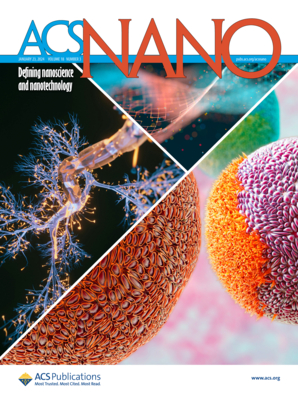High-Electron-Mobility MXene-Enhanced Metasurface Biosensors Integrated with Microfluidics for Real-Time Multifunctional Monitoring
IF 15.8
1区 材料科学
Q1 CHEMISTRY, MULTIDISCIPLINARY
引用次数: 0
Abstract
Two-dimensional MXene materials have gained attention in optics due to their excellent conductivity and light absorption, showing great potential in applications such as photodetectors, photothermal therapy, and laser protection. However, the application of MXene in enhancing plasmonic biosensing on metasurfaces has remained largely unexplored. The MXene functional metasurface plasmonic sensor (MetaSPR), integrated with the advanced microfluidic technology (3MSPR device), enables real-time monitoring of antibodies in three critical fields: precision diagnostics, drug development, and expression process monitoring. The MXene-MetaSPR, retaining the layered structure and high conductivity of MXene, exhibits enhanced sensitivity through its synergistic interaction with the electromagnetic fields within nanoarrays. The sensitivity of label-free IgG detection is increased by more than 250-fold, with a detection limit of 2.56 ng/mL. Experimental results demonstrate that this system is capable of detecting high-affinity (pM) binding between therapeutic antibodies and their targets. Additionally, it enables continuous monitoring during the nanobody expression process in engineered bacteria, with a single antibody concentration analysis completed within a time scale of minutes. The 3MSPR device rapidly and efficiently captures the initial phase of kinetic curves, facilitating precise affinity analysis and optimization of expression efficiency.

求助全文
约1分钟内获得全文
求助全文
来源期刊

ACS Nano
工程技术-材料科学:综合
CiteScore
26.00
自引率
4.10%
发文量
1627
审稿时长
1.7 months
期刊介绍:
ACS Nano, published monthly, serves as an international forum for comprehensive articles on nanoscience and nanotechnology research at the intersections of chemistry, biology, materials science, physics, and engineering. The journal fosters communication among scientists in these communities, facilitating collaboration, new research opportunities, and advancements through discoveries. ACS Nano covers synthesis, assembly, characterization, theory, and simulation of nanostructures, nanobiotechnology, nanofabrication, methods and tools for nanoscience and nanotechnology, and self- and directed-assembly. Alongside original research articles, it offers thorough reviews, perspectives on cutting-edge research, and discussions envisioning the future of nanoscience and nanotechnology.
 求助内容:
求助内容: 应助结果提醒方式:
应助结果提醒方式:


